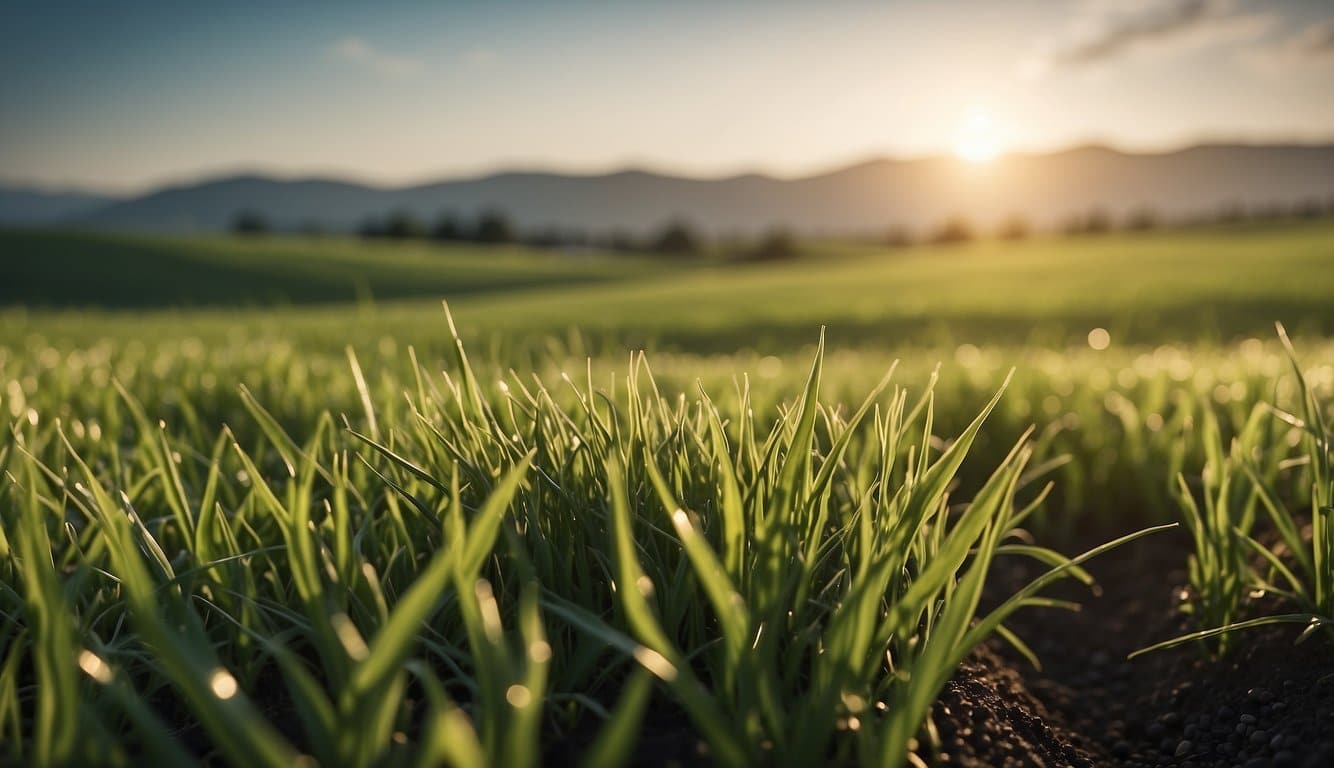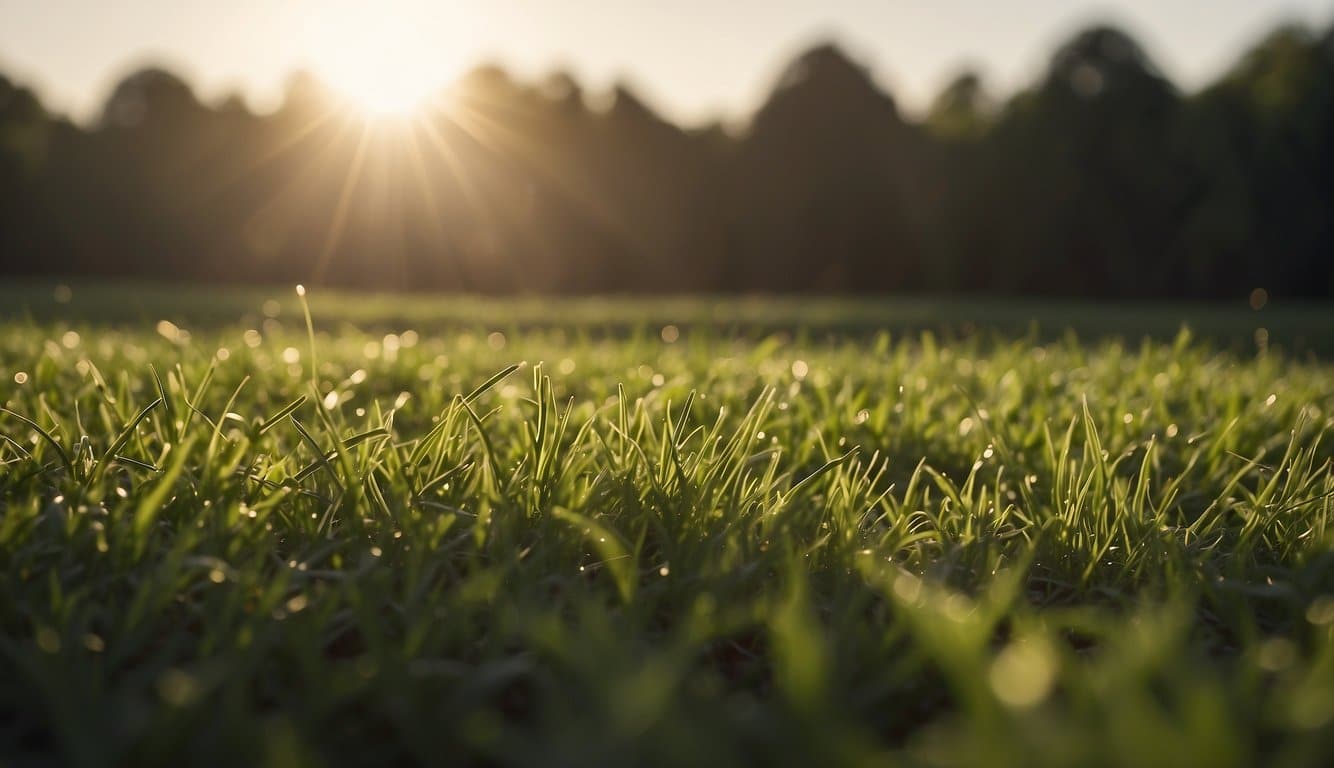Grass Seeds in Agricultural History
As you explore the agricultural history of grass seeds, you’ll discover their transformative role from ancient farming practices to the domestication efforts that shape modern landscapes.
Ancient Farming Practices
Ancient civilizations realized the benefits of grass species not just for feed but for stabilizing the soil and managing their environments:
- Flood management: Early forms of irrigation and water management often included the planting of grass seeds to prevent soil erosion.
- Soil fertility: Grasses, recycled as green manure, were used to revitalize fields.
In regions such as Mesopotamia, the fertile crescent, and along the Nile river, the cultivation techniques involving grass seeds were pivotal for agricultural success.
Grass Seed Domestication
Your journey through the domestication of grass seeds reveals a narrative of ingenuity and agricultural development:
- Selection for Traits: Farmers selected grasses with desirable features, like larger seed heads and ease of harvest.
- Grass Seed Trade: The trade of grass seeds evolved, becoming a significant economic activity as agriculture spread to different regions.
Evolution of Grass Seeds in Landscape Design
The transformation of grass seeds into the lush lawns and intricate gardens you see today is the result of centuries of horticultural art and science. Let’s explore how the uses and aesthetic of grass seeds have evolved from medieval times to the modern era.
Medieval Horticultural Uses
- Medicinal Grounds: In medieval times, monastery gardens utilized grass seeds to cultivate green spaces dedicated to healing herbs and medicinal plants.
- Feudal Aesthetics: Castles and manors sometimes incorporated simple turfs grown from grass seeds, primarily for utility rather than the ornate design.
Renaissance to Modern Landscaping
- Renaissance Splendor: The use of grass seeds became a statement of luxury, transforming estates with elaborate geometric and symmetric garden designs.
- Public Parks Movement: In the 19th century, public gardens and parks began spreading, promoting grass seeds for recreational spaces for all.
- Suburban Green Waves: Post-WWII, a trend towards suburbanization made lawns from grass seeds a standard in landscape design, emphasizing uniformity and manageable greenery.
Grass Seeds and Ecological Impact
When choosing grass seeds for landscaping, you directly affect local ecosystems. Your choices influence biodiversity and contribute to ecological stability and resilience.
Biodiversity and Native Species
- Native grasses: Planting native grass seeds enhances local biodiversity by providing habitats suited to regional wildlife. According to research highlighted by the US EPA, landscaping with native plants can lower installation and maintenance costs compared to non-native turf grasses.
- For example, using grass species native to California can support the iconic oak savannah ecosystem and its associated species.
- Exotic species: Introducing non-native grasses can suppress local flora and fauna. It is essential to select species that support, rather than compete with, native ecosystems.
Erosion Control and Land Rehabilitation
- Root systems: Native grasses often have extensive root systems, which play a crucial role in soil stabilization and prevent erosion.
- Deep roots secure topsoil from being washed away by rain.
- Complex root structures create channels that enhance water infiltration and reduce runoff.
- Land recovery: The use of native grass seeds is key in land rehabilitation efforts. They are specifically adapted to local conditions and help in the recovery of degraded lands.
- For example, the seeding of native prairie grasses can cost significantly less than sodded turf grass installation, as noted in the Greenacres guide, while offering enhanced ecological benefits.
Technological Advancements in Seed Spreading
As you embrace landscaping projects, it’s crucial to stay abreast of technological-advancements that streamline the process of seed spreading. Long gone are the days of tedious hand seeding. Let’s walk through the innovations that have changed the game:
- Broadcast Spreaders:
- Mechanical broadcast spreaders distribute grass seed over wide areas efficiently. Affixed to tractors or as push models, they use a rotating disk to fling seeds in an arc, covering more ground quickly.
- These tools are adjustable, so you can control seed density and spread width based on your lawn’s needs.
- Hydroseeding:
- This process combines grass seed, mulch, fertilizer, and water into a slurry that is sprayed over the soil.
- Notable for its effectiveness, hydroseeding promotes uniform growth and is excellent for erosion control on slopes.
- Drop Spreaders:
- Ideal for detailed work, drop spreaders release seeds directly beneath them, allowing for precision along edges and around obstacles.
- Seed Drills:
- Though more common in agriculture, seed drills are now available for residential use, planting seeds at specific depths and intervals.
- This direct method reduces waste and ensures optimal soil contact for better germination rates.
- Robotic Seed Spreaders:
- Embrace automation with programmable robots that can spread grass seed over preset lawn areas with minimal human intervention.
Explore Technological Advances In Grass And Legume Seed Technology – ScienceDirect for additional insight into how these developments benefit grassland management.
Grass Types and Regional Adaptations
When selecting grass seeds for your landscaping project, it’s important to choose types that are well-suited to your regional climate and soil conditions. Here’s a quick guide to help you match grass types with your local environment:
- Cool-Season Grasses: Thrive in regions with cold winters and warm summers
- Examples include:
- Kentucky Bluegrass: Prefers full sun and has excellent cold tolerance.
- Tall Fescue: Known for its deep roots and drought resistance.
- Examples include:
- Warm-Season Grasses: Ideal for areas with hot summers and mild winters
- Examples include:
- Bermuda Grass: Demands sunny environments and tolerates heat.
- Zoysia Grass: Excels in heat and can withstand heavy foot traffic.
- Examples include:
- Transitional Grasses: Suited for areas that experience a mix of hot and cold climates
- An option to consider is:
- Perennial Ryegrass: Quick to establish with good wear tolerance.
- An option to consider is:
Each grass type has specific soil and maintenance needs:
| Grass Type | Ideal Soil Condition | Maintenance Considerations |
|---|---|---|
| Kentucky Bluegrass | Well-drained, fertile | Regular mowing and watering, susceptible to disease |
| Tall Fescue | Tolerant of various soil types | Deep watering less frequently, mow at higher height |
| Bermuda Grass | Well-drained, not too rich in clay | Frequent mowing, requires dethatching |
| Zoysia Grass | Adaptable, prefers lower acidity | Infrequent mowing, drought-tolerant |
| Perennial Ryegrass | Moderately fertile, well-drained | Over-seeding may be needed, regular mowing |
For optimal growth, test your soil and consider local weather patterns before planting. Adaptations like drought tolerance and cold resistance are key characteristics to look for, ensuring your lawn thrives year-round. Selecting the right seed not only enhances your landscape’s aesthetic but also reduces the need for extensive maintenance. Remember, the perfect grass type is one that can adapt and flourish in your specific climate and soil.
Frequently Asked Questions
Exploring the tapestry of landscaping history, you’ll discover how grass seeds shaped outdoor aesthetics and environments over time. Let’s unearth the ways this simple element contributed to the evolving beauty and functionality of landscapes.
How were grass seeds historically used in landscaping practices?
Historically, grass seeds were a foundational component in establishing meadows and pastures. In medieval times, mixtures of grasses and flowering meadow plants were sown to create the picturesque “lawn gardens” noted in literature. This approach to landscaping offered both practical and aesthetic benefits.
What are the origins of lawns in residential and public spaces?
The first recorded lawn dates back to 1299 with the establishment of a bowling green for sports, which eventually spurred the development of grass spaces in residential areas. Private and ornamental lawns using turf grass began to emerge in the early 15th century as a symbol of status among the wealthy.
How did the cultivation of grass in landscaping evolve through the centuries?
Grass cultivation in landscaping evolved from simple hand-cutting to the use of scythes. Eventually, the invention of mechanical lawn mowers in 1868 made its way into the industry.
Which historical periods saw significant changes in the use of grass seeds for landscaping?
Significant changes in the use of grass seeds can be tracked back to the medieval period when ornamental lawns first appeared. The 19th century marked a pivotal point with the industrial revolution introducing lawn maintenance tools. The post-World War II era saw suburban expansion and the democratization of lawns due to easier maintenance and the development of suburbia.
What role did grass seeds play in the development of the modern ecological lawn movement?
Grass seeds played a crucial role in the modern ecological lawn movement as the demand for sustainable and low-maintenance alternatives rose. The movement led to the selection of native grass species that adapted better to local climates and required less water and fertilizer, reducing the overall environmental footprint of traditional lawns.
How have lawn care practices, including grass seeding, impacted the environment historically?
Historically, lawn care practices using grass seeding have both positively and negatively impacted the environment.
The overuse of water, chemical fertilizers, and pesticides led to ecological concerns.
However, responsibly managed lawns can minimize soil erosion, filter pollutants, and provide habitats for various species.

